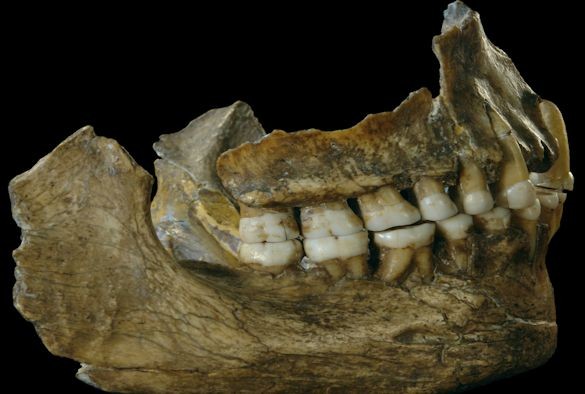By Ana Verayo, | March 09, 2017

Neanderthal plaque from teeth reveals some very sophisticated human behavior regarding medicinal use. (University of Liverpool)
Plaque left on teeth of Neanderthals has revealed important clues about how our ancient ancestors lived some 50,000 years ago. This new evidence shows that these pre-historic humans apparently possessed unique knowledge about medicine.
In this new study, scientists were able to obtain plaque from Neanderthals who lived in Soy, Belgium and El Sidrón, Spain. The researchers were able to conduct an intensive analysis of this evidence, which is also the oldest ones ever studied - at an estimated 50,000 years old.
Like Us on Facebook
This Neanderthal plaque also revealed surprising clues about their lifestyles. For example, one male from the El Sidrón site apparently suffered from a toothache due to an abscess. He also possessed a gut parasite that may have caused him diarrhea.
More specifically, researchers discovered traces of poplar, which also possesses salicylic acid that can also be found in Aspirin. There is also evidence of a mold known as penicillium which is also the main ingredient found in the world's first antibiotic, penicillin.
Poplar is not edible, and researchers are still questioning whether or not Neanderthals specifically used this poplar to specifically relieve pain, for medicinal purposes. According to the co-author of the study, Keith Dobney from the Simon Fraser University, this seems to be too much of a coincidence for that one person.
The researchers noted that this aspirin-like substance and the penicillium mold are not found in rotten fruit, vegetables or other plants. Dobney, who is also the chairman of the Human Paleoecology department at the University of Liverpool, said that this new evidence that there were at least three Neanderthals in El Sidrón who possessed some basic knowledge of medicinal plants. This also means that they were applying them for self-medication especially the poplar.
Dobney added that this is also telltale evidence about some sophisticated behavior of our nearest extinct relative. This new study about Neanderthal's teeth plaque was published in the journal, Nature.
-
Use of Coronavirus Pandemic Drones Raises Privacy Concerns: Drones Spread Fear, Local Officials Say

-
Coronavirus Hampers The Delivery Of Lockheed Martin F-35 Stealth Fighters For 2020

-
Instagram Speeds Up Plans to Add Account Memorialization Feature Due to COVID-19 Deaths

-
NASA: Perseverance Plans to Bring 'Mars Rock' to Earth in 2031

-
600 Dead And 3,000 In The Hospital as Iranians Believed Drinking High-Concentrations of Alcohol Can Cure The Coronavirus

-
600 Dead And 3,000 In The Hospital as Iranians Believed Drinking High-Concentrations of Alcohol Can Cure The Coronavirus

-
COVID-19: Doctors, Nurses Use Virtual Reality to Learn New Skills in Treating Coronavirus Patients







